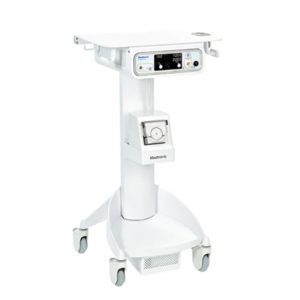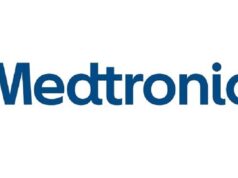
The US Food and Drug Administration (FDA) have granted breakthrough device designation for the Emprint ablation catheter kit (Medtronic). This is an investigational device not yet approved or cleared in the USA.
The catheter is intended to be used in conjunction with the Emprint microwave generator and lung navigation platform (also Medtronic) to provide a minimally invasive, localised treatment of malignant lesions in the lung, and it can be used together with standard-of-care therapy when indicated.
The FDA breakthrough device programme is intended to help patients receive more timely access to breakthrough technologies that have the potential to provide more effective treatment or diagnosis for life-threatening or irreversibly debilitating diseases or conditions. Under the programme, the FDA will provide Medtronic with priority review and interactive communication regarding clinical trial designs through to commercialisation decisions, a press release details.
Current clinical guidelines for the management of malignant lung lesions support a multimodal approach, which may include surgery, radiotherapy, and/or systemic drug therapy, depending on the tumour stage. Because patients with lung malignancies have been shown to have survival benefit from a combination of systemic and local therapy, less invasive local treatment modalities such as the Emprint ablation catheter kit have been developed. Using an endoluminal approach, the Emprint ablation catheter kit will be studied with Medtronic’s lung navigation system to allow for the delivery of microwave energy to the targeted lung lesion(s). Clinical guidelines recommend incorporating local therapies such as thermal ablation, in combination with systemic therapies when suitable.
Though not yet available in the USA, the Emprint ablation catheter kit is CE Marked and the NAVABLATE study completed enrollment of 30 patients in Europe and Hong Kong in 2020.
“This new technology has allowed me to personalise treatment of lung lesions for each patient, particularly lesions that may be challenging to manage,” says Kelvin Lau, a consultant thoracic surgeon at St Bartholomew’s Hospital, London, UK, and principal investigator for the NAVABLATE study.
The Medtronic lung navigation platform enables precise and accurate placement of the ablation catheter within the target lesion, which is critical for the success of this minimally invasive procedure. With 15 years of experience, the navigation platform has been used in more than 200,000 lung procedures.
“At Medtronic, we strive to transform outcomes by taking bold actions to ensure that patients with tumours in the lung receive care sooner, less invasively, and more effectively,” comments Emily Elswick, vice president and general manager, Lung Health and Visualisation, within the Surgical Innovations business, which is part of the Medical Surgical Portfolio at Medtronic. “Breakthrough designation from the FDA is just the first-step in realising our broader commitment to providing less invasive treatment options to patients with lung disease.”








